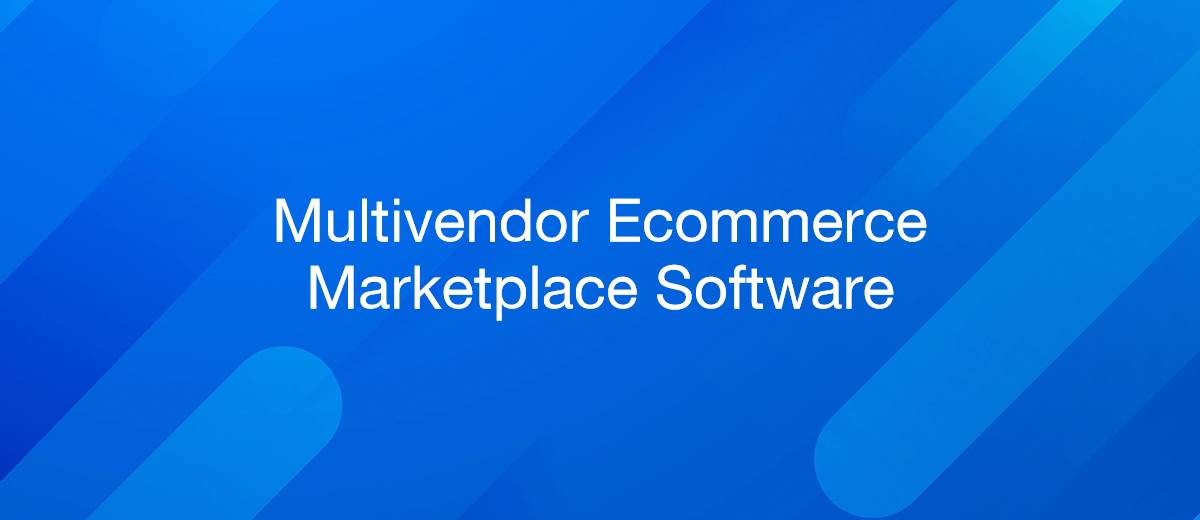Multivendor Ecommerce Marketplace Software – Everything to Know
Multi Vendor ecommerce marketplace software refers to the technology platform that enables the creation and operation of an online marketplace. It provides the necessary features and functionality for sellers to showcase and sell their products or services, and for buyers to browse, purchase, and interact with sellers. Our new article summarizes everything you need to know about Multi Vendor e-commerce marketplace software.
Key Features
Let's take a look at the key features of multivendor marketplace software:
- User Registration and Profiles: Allows sellers and buyers to create accounts, manage their profiles, and track their transactions.
- Product Catalog: Enables sellers to list their products with descriptions, images, pricing, and inventory details.
- Search and Filters: Helps buyers find specific products or browse through categories using search functionality and filters.
- Shopping Cart and Checkout: Allows buyers to add items to their cart, review their purchases, and proceed to payment.
- Payment Integration: Integrates with various payment gateways to facilitate secure online transactions.
- Ratings and Reviews: Enables buyers to rate and review sellers and their products, providing social proof and feedback.
- Order Management: Helps sellers manage their orders, track shipments, and handle returns or refunds.
- Messaging and Notifications: Facilitates communication between buyers and sellers through messaging systems and automated notifications.
- Analytics and Reports: Provides sellers with data and insights on sales, customer behavior, and marketplace performance.
Types of Multi Vendor Marketplace Software:
- Off-the-Shelf Solutions: These are pre-built software packages that can be customized and deployed quickly.
- Custom Development: Building a marketplace software from scratch allows for complete customization and scalability but requires more time and resources.
How to Choose Software
Considerations for choosing multi vendor marketplace software:
- Scalability: Ensure the software can handle a growing number of sellers and products without performance issues.
- Security: Look for robust security measures to protect user data, transactions, and sensitive information.
- Mobile-Friendly: With the rise of mobile commerce, it's crucial to have a responsive and mobile-friendly marketplace platform.
- Integration Options: Consider whether the software can integrate with other systems such as payment gateways, shipping providers, or analytics tools.
- User Experience: A user-friendly interface and intuitive navigation are essential for both sellers and buyers.
How To Start Multivendor Ecommerce Marketplace

Starting a multivendor ecommerce marketplace requires careful planning and execution. Here's a step-by-step guide to help you get started:
- Define Your Niche and Business Model: Decide on the focus of your marketplace and the target audience. Identify a specific niche or industry where you believe there is demand and potential for growth. Determine your revenue model, such as earning a commission on sales or charging subscription fees to vendors.
- Conduct Market Research: Analyze the competition in your chosen niche. Identify key players, their strengths and weaknesses, and the gaps you can fill. Understand customer preferences, pain points, and expectations to differentiate your marketplace and provide a unique value proposition.
- Develop a Business Plan: Outline your marketplace's structure, features, and functionalities. Define your marketing and sales strategies, operational processes, and financial projections. A well-thought-out business plan will serve as a roadmap for your venture and help you secure funding if needed.
- Build Your Website: Hire a professional web development team or use an ecommerce platform to create your marketplace website. Ensure that the platform supports multivendor functionality, allowing multiple sellers to create their profiles, list products, and manage orders. Design an intuitive and user-friendly interface that offers a seamless browsing and purchasing experience.
- Vendor Onboarding: Develop a vendor onboarding process that includes registration, verification, and approval steps. Determine your criteria for accepting vendors, such as product quality, reputation, or compliance with certain standards. Provide vendors with clear guidelines on how to create their profiles, list products, set prices, and manage inventory.
- Implement Payment and Logistics Systems: Integrate a secure payment gateway to facilitate transactions between buyers and vendors. Offer multiple payment options to cater to customer preferences. Set up a reliable logistics system to manage order fulfillment, shipping, and tracking. You can consider partnering with third-party logistics providers or negotiate deals with shipping companies to offer competitive rates.
- Ensure Strong Customer Support: Establish effective customer support channels to address inquiries, complaints, and disputes promptly. Provide multiple channels like live chat, email, and phone support to assist buyers and vendors. Implement a rating and review system to build trust and maintain transparency in the marketplace.
- Implement Marketing and Promotion Strategies: Develop a comprehensive marketing plan to attract buyers and vendors to your marketplace. Utilize various online marketing channels, including search engine optimization (SEO), social media marketing, influencer collaborations, content marketing, and targeted advertising campaigns. Consider offering promotional incentives to early adopters or running referral programs to encourage user growth.
- Monitor and Improve: Continuously track and analyze key performance indicators (KPIs) such as conversion rates, sales volumes, customer satisfaction, and vendor engagement. Leverage analytics tools to gain insights into user behavior and preferences. Use this data to make informed decisions, improve user experience, and optimize your marketplace for better performance.
- Scale and Expand: Once your marketplace gains traction, focus on scaling and expanding your operations. Consider introducing new product categories, expanding to new geographical regions, or offering additional services. Continually innovate and adapt to meet evolving market needs and stay ahead of the competition.
Remember, starting a multivendor ecommerce marketplace requires dedication, strategic thinking, and ongoing effort. It's important to create a strong foundation, nurture relationships with vendors and customers, and provide a valuable platform that addresses their needs effectively.
List of Popular Platforms
Popular multi vendor marketplace software:
- Yo!Kart
- CS-Cart Multi-Vendor Marketplace
- BigCommerce Multi Vendor Marketplace
- X-Cart Multi-Vendor
- Magento
- WooCommerce
- Shopify
- Sharetribe
Monetization Options
Multi-vendor e-commerce software is characterized by various monetization options. Here is a list of the main ones:
- Commission Fees: Charge a percentage or fixed fee on each transaction made on the marketplace.
- Listing Fees: Charge sellers for listing their products or services on the platform.
- Subscription Plans: Offer premium subscription plans to sellers with additional features or benefits.
- Advertisements: Allow sellers to promote their products through paid advertisements on the marketplace.
Final Thoughts
Remember that selecting the right multi vendor e-commerce marketplace software depends on your specific needs, budget, and long-term goals. It's important to evaluate different options, consider future scalability, and choose a solution that aligns with your business requirements.
Apix-Drive is a simple and efficient system connector that will help you automate routine tasks and optimize business processes. You can save time and money, direct these resources to more important purposes. Test ApiX-Drive and make sure that this tool will relieve your employees and after 5 minutes of settings your business will start working faster.

